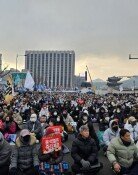The future of K-Pop I witnessed in New York City
The future of K-Pop I witnessed in New York City
Posted November. 14, 2023 08:26,
Updated November. 14, 2023 08:26
I visited the so-called ‘Friends apartment’ in Manhattan, New York City, late last month. The building served as the setting for the popular sitcom 'Friends' from 1994 to 2004. Following the sudden death of actor Matthew Perry, who portrayed Chandler Bing in the show, the apartment was inundated with fans paying their respects. Bouquets and letters were piled up around the streetlights.
It was interesting to see that many of the fans were teenage girls who had been born after the show ended. "It's like losing a best friend," said Cecilia (17) and Lorna (14), French tourists who watched Friends on OTT services with their mother until recently. The show also inspired their trip to New York, which made them want to visit the city. I was able to feel the enduring power of culture transcending time.
When I introduced myself as "a reporter from Korea," the sisters responded unexpectedly.
“What? We are learning Korean because we love K-pop. My sister learned it first, and I just started. We will visit Seoul someday.”
It was surreal to find myself conversing about the American show from two decades ago with girls of different ages, nationalities, and races while conversing about the latest K-pop trends. I enjoyed imagining K-culture sustaining itself as a global phenomenon, akin to Friends, which evolved into a cultural icon beyond the United States in the 1990s when globalization was in full swing.
Every day, I'm reminded of how differently 'Made in Korea' is treated in the U.S. compared to decades ago. A few days ago, Jungkook from BTS performed a surprise concert in New York's Times Square that made people around the area go crazy. Local stations went the extra mile, deploying helicopters to provide live coverage of the thousands of people who filled the square. In popular Korean restaurants in New York, marketing techniques involve stories, such as 'Gochujang made by Korean artisans in Andong,' aimed at attracting locals. Interestingly, most Americans don't even know where Andong is. Meanwhile, the Trader Joe's kimbap craze in the U.S. shows no signs of slowing down.
Not only that at least five major museums across the world, including the Metropolitan Museum of Art in New York and the Philadelphia Museum of Art, have exhibitions highlighting Korean art. During the K-Startup Forum in New York last month, Bank of America (BoA) Chief Operating Officer Mike Joo said, "These days, if I say I am Korean, people consider it 'cool.'”
However, the emerging K-culture is not without its limitations. Beyond concerns about content diversity, I sometimes sense a critical undercurrent beneath the growing fondness and expectations for Korean culture. One prominent issue is racism. For instance, I know an Indian-American engineer who is a devoted fan of K-dramas. He once asked me about having a barbeque dinner with colleagues after late-night work, which he had often seen in K-dramas. But he recently admitted that he's given up on traveling to Korea. "I'm not sure if I should bring my kids because I've heard that if you have darker skin, you might be looked down upon," he said. Another acquaintance asked, "I heard that if a woman is obese in Korea, it's considered a problem—is that true?"
To be sure, their questions may be influenced by the biases perpetuated on social media. However, as much as we are proud of K-culture in the world, we also need to look at the world from a global perspective to bring our aspirations of K-culture becoming a sustainable cultural phenomenon closer to reality.
Headline News
- Joint investigation headquarters asks Yoon to appear at the investigation office
- KDIC colonel: Cable ties and hoods to control NEC staff were prepared
- Results of real estate development diverged by accessibility to Gangnam
- New budget proposal reflecting Trump’s demand rejected
- Son Heung-min scores winning corner kick







